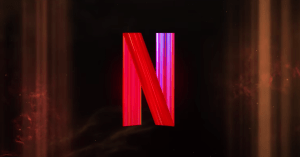The “super blue blood moon,” a confluence of lunar events that hasn’t occurred in North America for 150 years, has already begun on the other side of the world, and the photos are gaining a viral status.
Twitter users in the east, especially India, can’t believe the sight they’ve been seeing in the night sky for the past several hours. The huge moon can be seen clearly even with the sun illuminating the sky in many places. Its haunting reddish hue has people awestruck and spooked, and experience stargazers can’t tear their eyes away.
Videos by PopCulture.com
The super blue blood moon combines four lunar anomalies. First, a supermoon is when a full moon occurs while the moon is at its closest point to the Earth in its elliptical orbit. This makes the already full moon appear even bigger brighter, and more prominent in the night sky.
Photo of the Century ( rather in 150 years ) : #SuperBlueBloodMoon #IndiaGate , Delhi @amritabhinder pic.twitter.com/BQiei1JkTy
— Sheikh Junaid (@SheikhJunaidGul) January 31, 2018
Second of all, a blue moon is when two full moons occur in the same month. There was already a full moon on the night of Jan. 1, but because the lunar cycle lasts about 27 days, it has had time to come around again before we turn the page on the calendar. The term “blue moon,” has taken on many meanings throughout history but this is now the agreed-upon definition.
Picture of the Day 😂#SuperBlueBloodMoon #Supermoon2018 pic.twitter.com/319MdjLN8y
— ℳᴀᴀʟɪᴋ ツ (@almaalik_) January 31, 2018
Finally, a “blood moon” occurs during a lunar eclipse. Tonight, the Earth is between the sun and the moon, which means our planet is casting a shadow across the lunar surface. Rather than making it invisible, this gives the moon its menacing, blood red color. The lunar eclipse is visible in varying degrees depending on where on the globe you see it from. Scientists say that it will be the most clear from the west coast of the United States on Wednesday night.
Oh, California. #SuperBlueBloodMoon pic.twitter.com/yEu2E06fMe
— Los Angeles Times (@latimes) January 31, 2018
The last recorded super blue blood moon in North America was 150 years ago. It’s a difficult phenomenon to predict, as the conditions can vary so much. In addition, the blue moon is only unique because of the Gregorian calendar, which has no real astronomical significance.
Why is it called a #SuperBlueBloodMoon?
🌕Supermoon – When the Moon is at or near its closest point to Earth
🔵Blue Moon – The second full moon in a month
🔴Blood Moon – The red tint Earth’s shadow casts on the Moon during a lunar eclipseWatch it live: https://t.co/OduDuvJhUP pic.twitter.com/lezmdEVHHv
— NASA (@NASA) January 31, 2018
Still, the sky is a marvel for the next 27 hours or so, and that unique feeling of convergence that come with every rare celestial event is permeating the air — and social media.
From anywhere in the U.S., or the world for that matter, it’s a good night for staring up at the moon. However, for those who want to see the spectacle at its peak, Nasa is livestreaming the super blue blood moon from various points on the west coast starting at 4:50 a.m. on Thursday morning.
Most Viewed
-

LONDON, UNITED KINGDOM – DECEMBER 02: (EMBARGOED FOR PUBLICATION IN UK NEWSPAPERS UNTIL 48 HOURS AFTER CREATE DATE AND TIME) Joan Branson and Sir Richard Branson arrive at Buckingham Palace to attend a reception hosted by Queen Elizabeth II for Members of the Diplomatic Corps on December 2, 2014 in London, England. (Photo by Max Mumby/Indigo/Getty Images)







